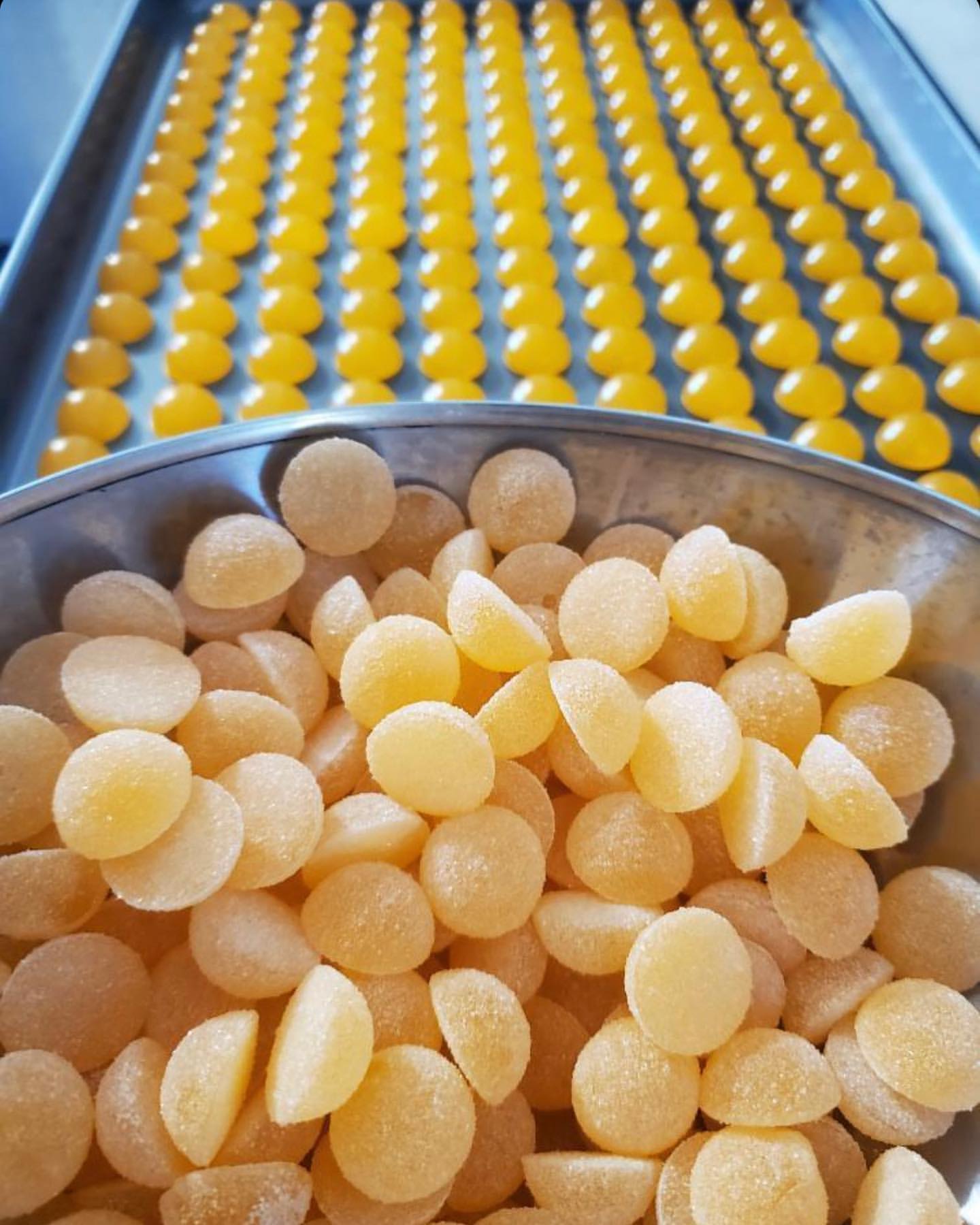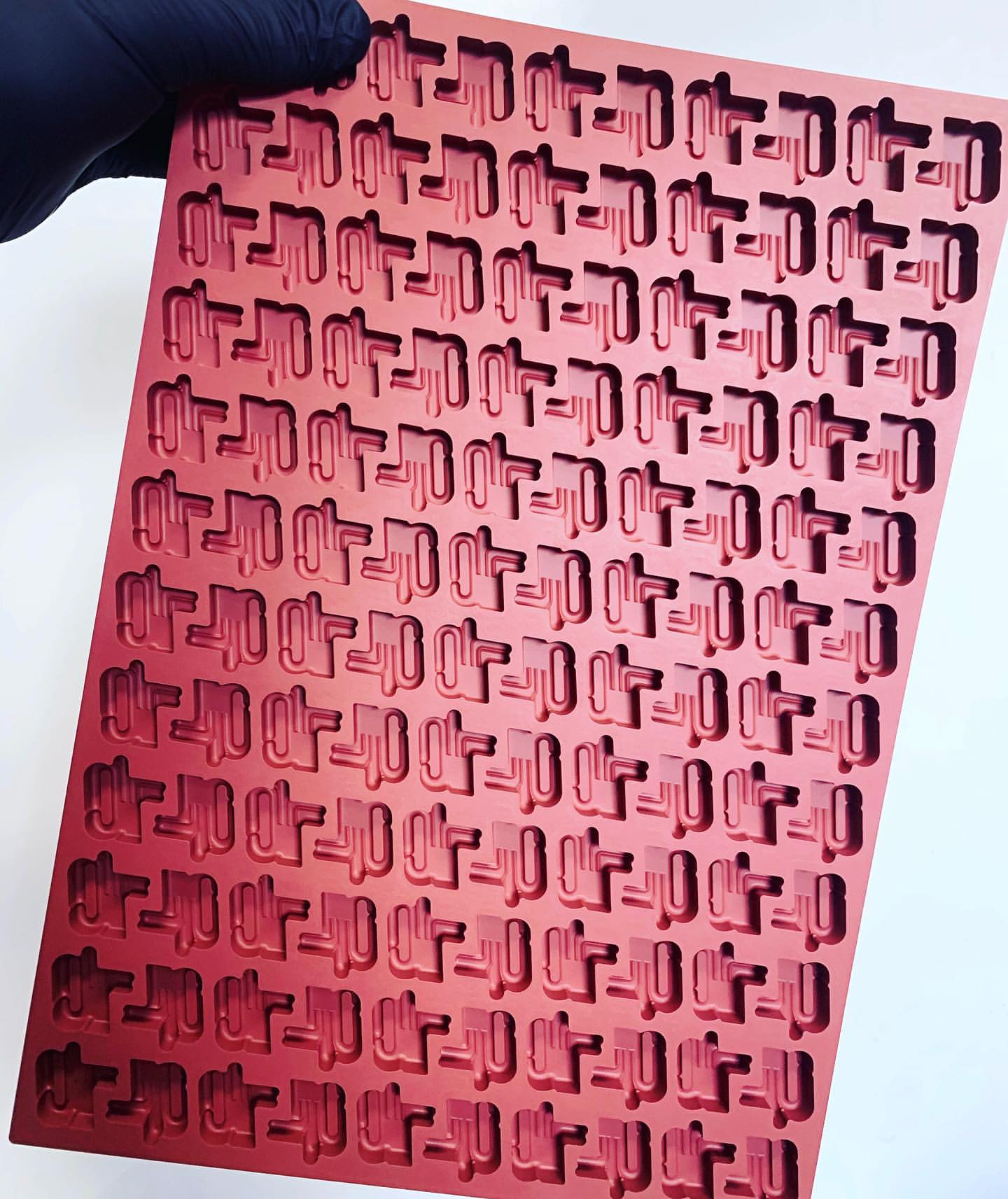When it comes to gummy manufacturing, two popular choices for gelling agents stand out: Gelatin and Pectin.
Gelatin has long been the go-to ingredient for professionals seeking to make “classic” gummies, but in recent years, Pectin has emerged as a formidable competitor, offering its own unique advantages.
In today’s blog, we will delve into the pros and cons of working with gelatin and pectin when making gummies professionally, giving you a comprehensive understanding of the differences between these two ingredients and helping you make informed decisions for your candy manufacturing endeavors.
So, whether you're a seasoned candy maker or just starting out in the industry, join us as we explore the distinct properties of gelatin and pectin and the impact they can have on your gummy confections.
Pectin
Pectin is an increasingly popular option in the gummy market and has lots of advantages when it comes to gummy manufacturing.
As a plant-based gelling agent, Pectin is a great option for vegan gummy formulas. It is typically derived from apples and oranges, but can also be obtained from other plants.
One of the most significant advantages of Pectin is its clean taste profile, which allows flavors to shine through without interference.
This is especially beneficial in comparison to gelatin, which can have a somewhat inhibitive effect on flavors that can affect the overall appeal of the gummy.
In addition, pectin offers higher visual clarity, which means you don’t need to add as much color to your gummies.
Note that some natural colors may not be suitable for pectin gummies due to the low pH required by most pectin-based formulations.
But if you really know what you’re doing in your gummy kitchen, it is often possible to adjust other elements of your recipe to accommodate your desired flavor.
Another great feature of pectin gummies is their heat resistance. Unlike gelatin gummies, pectin gummies maintain their shape when exposed to high temperatures and won’t melt even when left out in the sun.
This is because when acids are added to the pectin formula to initiate the curing process, the pectin formula undergoes a chemical change.
But there’s a downside. This chemical change essentially means that you cannot melt the gummies down and start over once curing has begun. So it’s important to have all of your measurements dialed in before undertaking large batches.
Texturally, pectin gummies offer a clean bite. While this may be a downside for some who prefer the chewiness of other types of gummies (more on that below), others may find the soft bite-through to be a more pleasant experience.
Check out our IG for content related to the finding the right balance between Pectin and Gelatin– and a ton of other nuggets of gummy-wisdom besides:
Gelatin
Gelatin is an old-school favorite for making classic gummies that most people have grown to expect.
Derived from the collagen in bones, cartilage, or ligaments, the most commonly used type of gelatin is pork-based, making it unsuitable for vegan or vegetarian products.
One of the key benefits of gelatin is its elastic texture - its “bouncy bite” - which is so recognizable. The familiarity alone is why so many turn to gelatin for their products.
However, it should be noted that gelatin does not offer as much visual clarity as pectin, which can be an issue if a clear product is desired.
Also, as opposed to Pectin-based recipes, Gelatin’s curing process does not entail an irreversible chemical change.
The upshot? Gelatin is dead-simple to work with in case of a mistake, making it a go-to option for many candy makers.
If things go wrong with a batch, just melt the gummies down, and re-pour.
But this also means that gelatin gummies have a low heat resistance, and they can easily melt if left out on a hot day.
This can be especially problematic for ensuring precise dosing, making gelatin based formulations somewhat sub-optimal for those looking to include strict amounts of actives in each serving.
This issue can be mitigated somewhat by adding pectin to the formula. With such a hybrid recipe, you can approach the texture of a gelatin gummy while also approximating the heat resistance of a pectin gummy.
If you’re interested in taking this hybrid route, reach out today and a member of our team can help you decide if this type of recipe is right for your gummy production.
—
As you can see, both gelatin and pectin offer unique benefits when it comes to making gummies professionally.
Gelatin provides that beloved classic texture and familiarity, while pectin offers a vegan-friendly option with clean flavors and heat resistance.
By understanding the strengths and limitations of each ingredient, you can tailor your recipes to meet the expectations and dietary preferences of your target clientele.
However, it's important to remember that the synergy between the gummy recipe and gummy molds is what truly determines the efficiency of operations.
The right combination of ingredients, techniques, and molds ensure that pour life, set times, and demold speed are all optimized, paving the way for a dramatic scaling of production.
So what are you waiting for? Get out there and start experimenting with Gelatin and Pectin in your gummies today!




